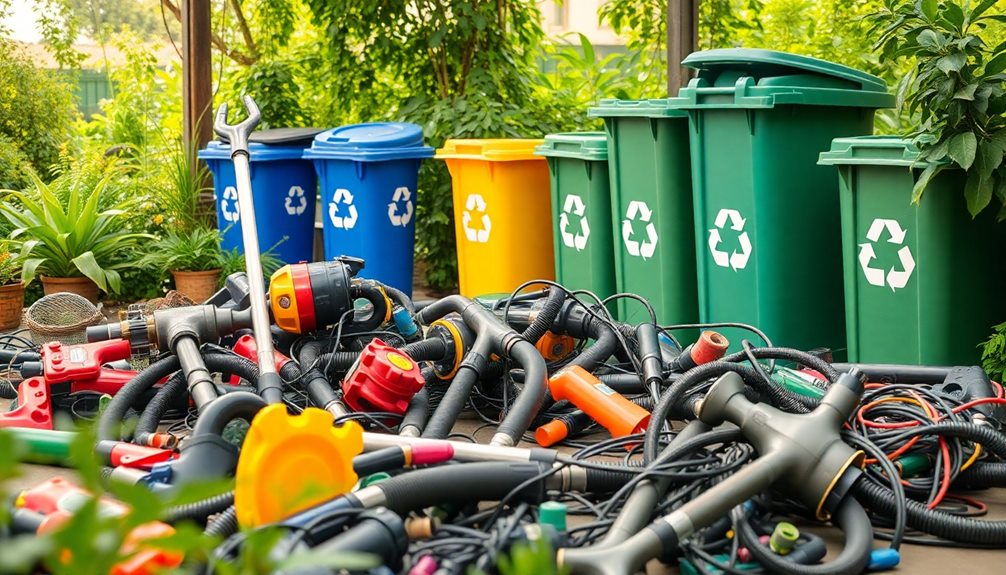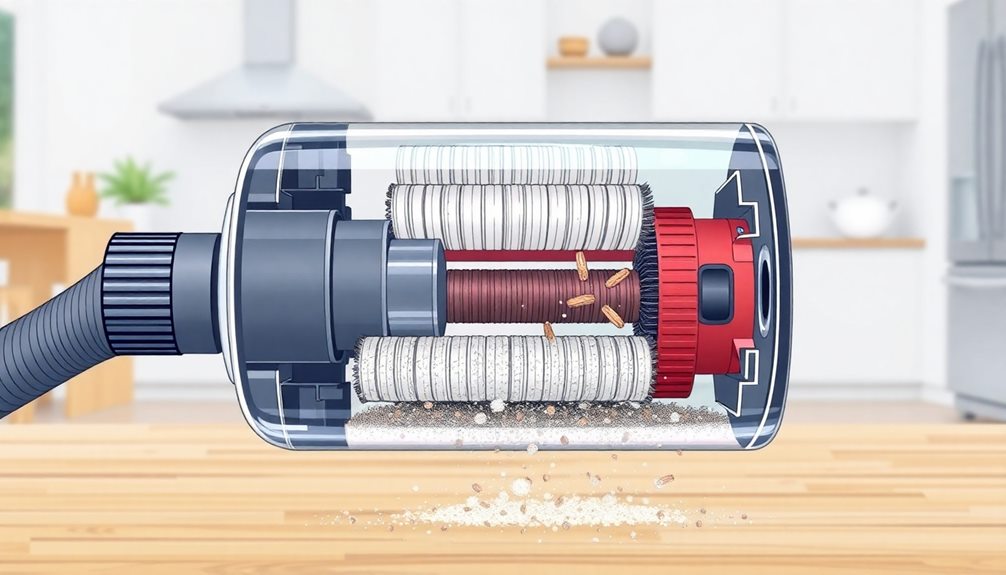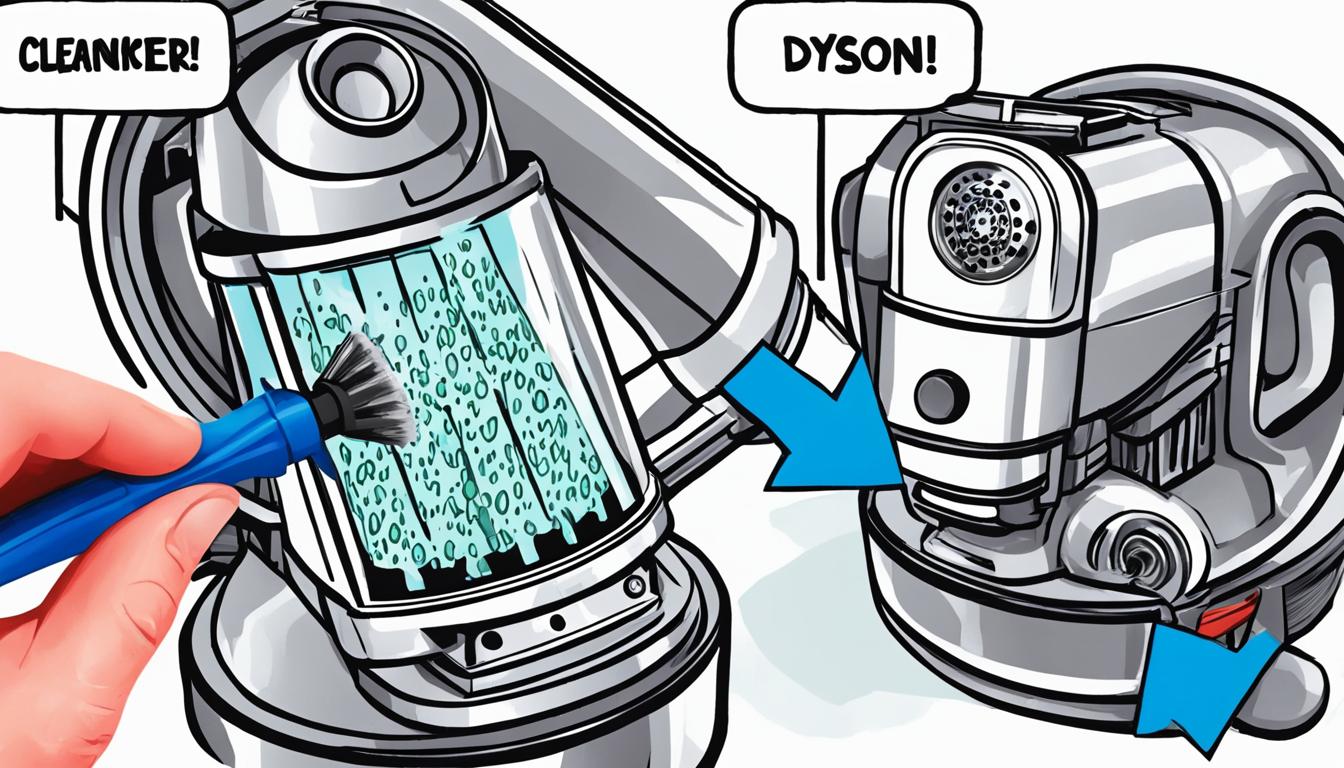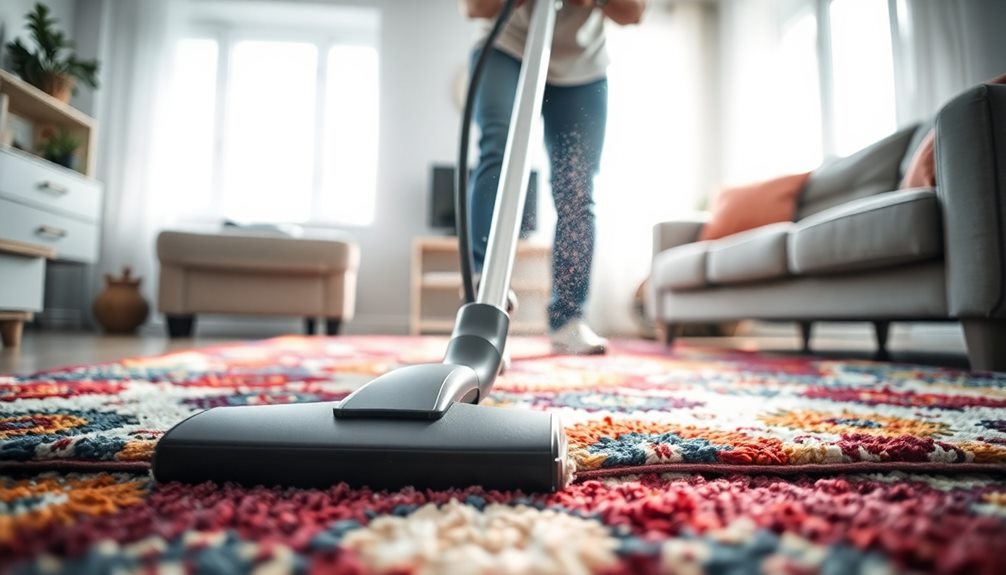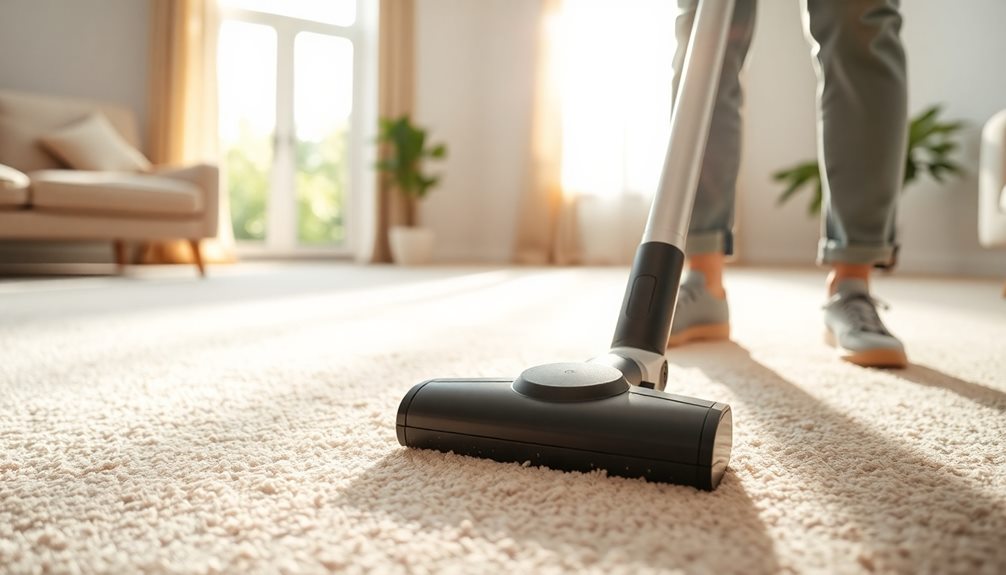Recycling your old vacuum cleaner is important because about 90% of its parts can be repurposed, helping to reduce landfill waste. Start by disconnecting the vacuum and removing batteries for safety. Then, check local recycling programs, as many retailers and municipalities offer e-waste collection events. You can also donate functional vacuums or sell them online. Remember to disassemble it thoroughly, separating recyclable materials from non-recyclables. Handling hazardous components correctly is essential, so always follow local regulations. Want to discover more tips and methods for responsible disposal?
Key Takeaways
- Research local recycling centers that specialize in e-waste disposal for vacuum cleaners to ensure proper recycling.
- Disassemble your vacuum by removing batteries and detachable parts for easier sorting and processing of recyclable materials.
- Participate in local e-waste collection events or retailer take-back programs for responsible disposal of old vacuums.
- Donate functional vacuums to those in need to extend their lifecycle and reduce waste.
- Follow local regulations regarding e-waste disposal to avoid penalties and ensure safe handling of hazardous materials.
Importance of Recycling Vacuum Cleaners
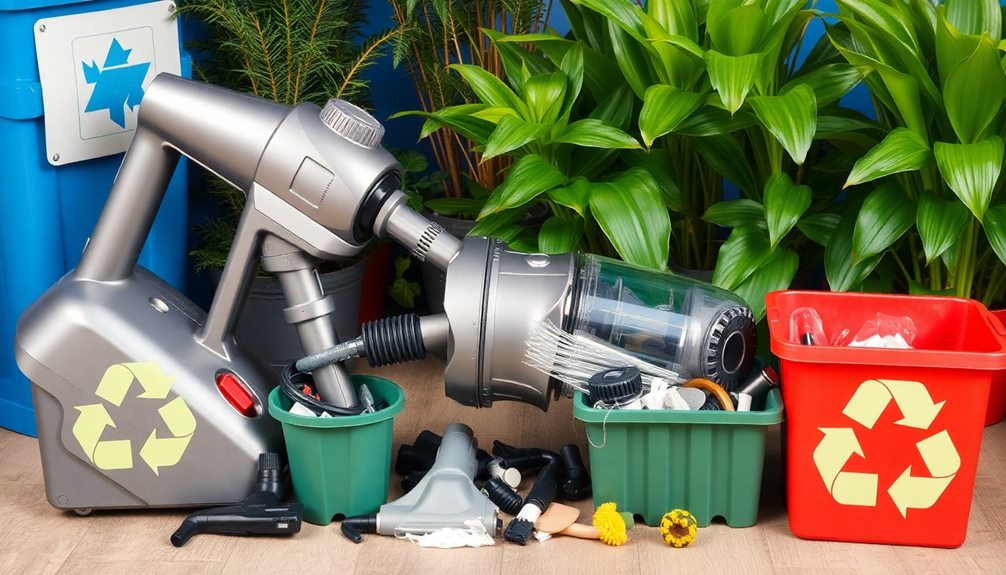
Recycling vacuum cleaners is essential, especially since about 90% of their components can be repurposed, which helps considerably cut down on landfill waste.
When you recycle your vacuum, you're not just getting rid of an old appliance; you're making an environmentally responsible choice that benefits everyone. E-waste, including vacuum cleaners, contributes to around 70% of toxic heavy metals in landfills, posing serious risks to our soil and water.
By choosing to recycle, you prevent harmful materials from contaminating our environment and protect public health. The recycling process conserves natural resources by reusing valuable metals and plastics, ensuring that fewer new materials need to be mined or manufactured.
It's also worth noting that recycling supports the economy, having generated over 681,000 jobs and $5.5 billion in tax revenue in the U.S. as of 2020.
Every time you recycle your vacuum, you contribute to a sustainable circular economy where materials are kept in use. This approach minimizes energy consumption and reduces the need for new resources, making it a win-win for both you and the planet.
Environmental Impact of E-Waste

When you toss your old vacuum cleaner in the trash, you're contributing to a serious problem. E-waste contains toxic metals that can contaminate soil and water, while improper disposal releases harmful dust and fumes into the air.
Additionally, the environmental consequences of waste, similar to those seen with wood-burning, can lead to significant public health issues and ecological damage.
Toxic Metal Contamination
Although many people don't realize it, vacuum cleaners contribute considerably to the growing problem of toxic metal contamination in our environment. E-waste, which includes vacuum cleaners, is responsible for about 70% of toxic heavy metals in landfills. These toxic metals, like lead, mercury, and cadmium, can leach into the soil and groundwater, posing serious health risks for both you and wildlife.
Here's a breakdown of the hazardous elements in vacuum cleaners:
| Toxic Metal | Source in Vacuum Cleaners | Environmental Impact |
|---|---|---|
| Lead | Metal parts | Contaminates soil and water |
| Mercury | Electrical components | Affects human nervous system |
| Cadmium | Battery materials | Damages ecosystems and wildlife |
Improper disposal of vacuum cleaners can release harmful dust and contaminants, affecting air quality and increasing respiratory issues. Additionally, burning e-waste produces toxic fumes that further endanger public health. By recycling your vacuum cleaner, you guarantee these hazardous materials are properly managed, helping to preserve the health of our ecosystems and your community.
Air and Water Pollution
Improper disposal of vacuum cleaners not only contributes to toxic metal contamination but also greatly impacts air and water quality. E-waste, including vacuum cleaners, accounts for about 70% of the toxic heavy metals found in landfills.
When these devices break down, they release harmful substances that can seep into the air, soil, and groundwater. Burning e-waste produces toxic fumes that considerably degrade air quality, posing serious health risks to you and your community.
Moreover, contaminants from improperly disposed vacuum cleaners can infiltrate groundwater, threatening drinking water sources and agricultural crops. This contamination can lead to serious health issues, affecting everyone in nearby areas.
The dismantling process of vacuum cleaners can also release harmful dust particles, further exacerbating pollution and respiratory problems.
Options for Disposal of Vacuums
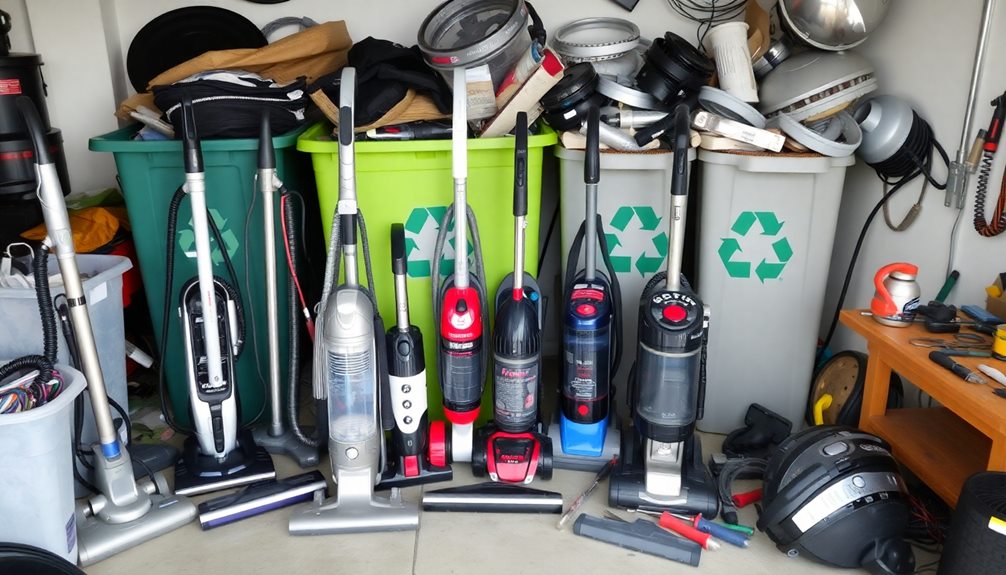
When it comes to disposing of your old vacuum, you've got several great options.
You can recycle it at local centers, donate it to charities, or sell it online to give it a second life.
Each choice not only helps reduce waste but also supports sustainable practices in your community.
Recycling Centers Availability
If you're looking to dispose of your old vacuum cleaner responsibly, you'll find numerous recycling options available. Many municipalities in the USA host e-waste collection events throughout the year, allowing you to drop off your vacuum at designated locations.
In the UK, local councils often provide curbside pickup for electronic waste, including vacuums, and may even have dedicated bins for such items.
Retailers like Best Buy and Home Depot also offer trade-in programs. When you purchase a new appliance, you can bring in your old vacuum for responsible recycling.
Specialized e-waste recycling centers accept vacuum cleaners and may even pay you cash for recyclable metal parts, making this an economically viable option for disposal.
Additionally, major vacuum brands such as Dyson and Vax provide manufacturer recycling programs, letting you return your old models for proper disposal through certified e-waste handlers.
By taking advantage of these options, you're not only recycling your vacuum but also contributing to a more environmentally friendly future.
Make sure to check your local resources to see which options are available in your area!
Donation and Selling Options
Donating or selling your old vacuum cleaner can be a great way to give it a second life while helping others in your community.
If your vacuum is still functional, consider donating it to organizations like Goodwill, local shelters, or schools. This not only aids those in need but also reduces waste.
If you prefer to sell, online platforms such as Freecycle and Craigslist make it easy to list your used vacuum for local buyers. You can even generate some income by selling it on eBay, promoting reusability and contributing to a circular economy.
Don't overlook trade-in programs offered by many retailers and manufacturers, where you can exchange your old vacuum for discounts on new purchases.
If your vacuum's beyond repair, think about donating or selling its parts. Components like motors and hoses can still hold value and are often recyclable.
Preparing Your Vacuum for Recycling
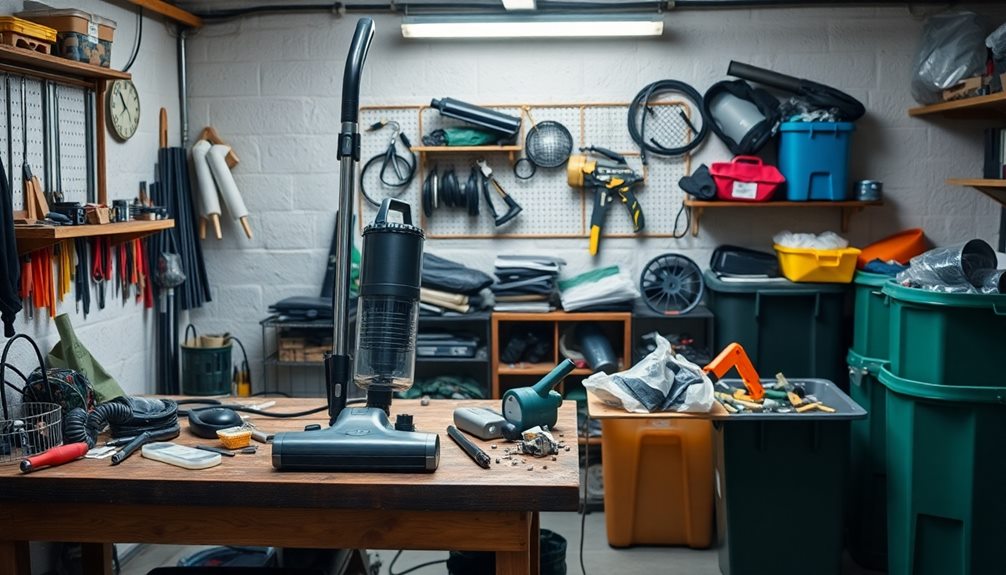
Before recycling your vacuum cleaner, it's important to prepare it properly to ascertain a smooth process. Start by disconnecting the vacuum from its power source and removing any batteries. Remember, battery disposal guidelines vary by locality, so check those before you proceed. Next, disassemble the vacuum by taking off components like hoses, filters, and brushes. This helps to recycle a vacuum more effectively by ascertaining recyclable materials are properly separated.
Here's a quick reference table to help you prepare your vacuum for recycling:
| Step | Action | Notes |
|---|---|---|
| 1. Disconnect Power | Unplug the vacuum and remove batteries | Follow local battery disposal rules |
| 2. Disassemble | Remove hoses, filters, and brushes | Facilitates better recycling |
| 3. Clean Thoroughly | Wipe down and eliminate dust | Prevents contamination |
| 4. Check Guidelines | Review local recycling instructions | Different materials have different requirements |
| 5. Label Components | Use labels if needed | Ascertains proper recycling stream |
Disassembly Process for Recycling
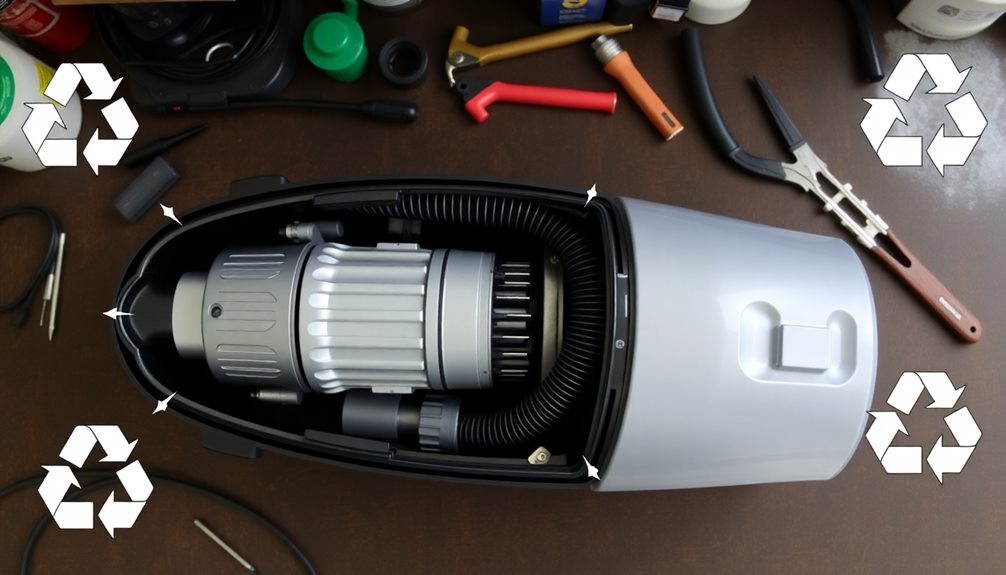
Once you've prepared your vacuum cleaner for recycling, it's time to tackle the disassembly process. Start by unplugging your old vacuum cleaner to guarantee safety.
Then, remove any detachable parts like bags, filters, and hoses. This makes it easier to sort materials for recycling.
Follow these steps to disassemble your vacuum:
- Use the Right Tools: Grab a screwdriver and any other necessary tools to unscrew the vacuum's body.
- Separate Components: Carefully pull apart the vacuum into individual pieces, identifying recyclable materials such as plastic, metal, and rubber.
- Handle Electrical Parts with Care: Be cautious with electrical components, as they may be considered E-waste and contain hazardous materials. Sort them properly for e-waste recycling.
- Document the Process: Take notes or photos during disassembly. This can help you understand your recycling options for each part later.
Once you've finished disassembling, check local recycling guidelines to find out where to take the separated materials.
Responsible disposal is key to effective recycling!
Local Recycling Programs and Resources
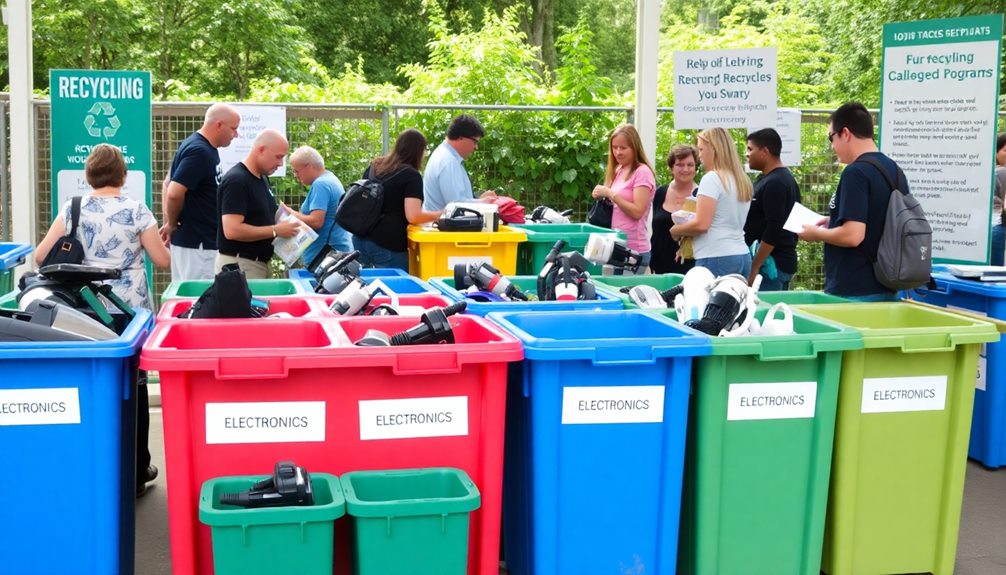
Finding the right local recycling program for your vacuum cleaner can make the process much easier. Many municipalities in the USA host e-waste collection events specifically for electronic items, including vacuum cleaners. These events allow you to responsibly dispose of your old appliances without hassle.
In the UK, local councils often provide designated bins for electronic waste, and some even offer curbside pickup for old vacuum cleaners.
If you're in the USA, consider checking with major retailers like Best Buy and Home Depot, which run trade-in events. When you buy a new appliance, you can recycle your old vacuum cleaner in one go.
Additionally, brands like Dyson and Vax have dedicated recycling programs, making it simple to return your old vacuum for proper disposal through authorized e-waste handlers.
You can also locate local electronics recycling centers that accept small appliances, including vacuum cleaners. Use online resources or community directories to find these facilities.
Taking advantage of these local recycling programs can help you with junk removal and guarantee your vacuum cleaner is disposed of responsibly, contributing to a healthier environment.
Donating Functional Vacuum Cleaners
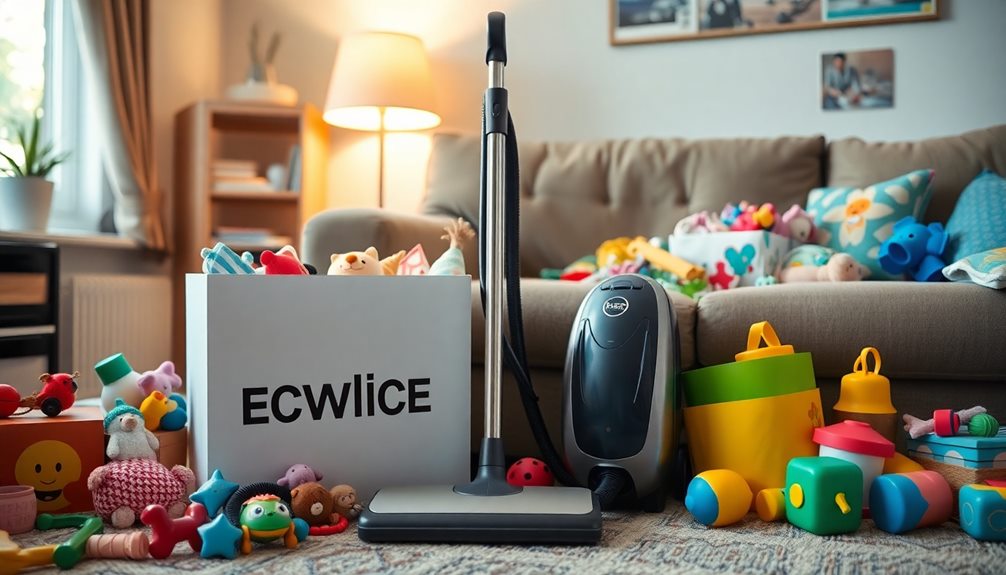
Consider donating your functional vacuum cleaner to organizations like Goodwill, shelters, or schools. By doing so, you not only help those in need but also contribute to reducing waste in our landfills.
Donating functional vacuum cleaners allows old appliances to find new homes, preventing them from becoming part of the 70% of e-waste that's harmful to the environment.
Here are a few steps to guarantee your donation is impactful:
- Clean Thoroughly: Make sure the vacuum is free from dust and debris, meeting hygiene standards for the next user.
- Check Functionality: Test the vacuum to guarantee it's in good working condition before you donate it.
- Research Local Organizations: Find charities and nonprofits in your area that accept household items, including vacuums.
- Use Online Platforms: Consider using sites like Freecycle or Craigslist to connect with individuals who may need a vacuum.
Selling or Trading In Vacuums
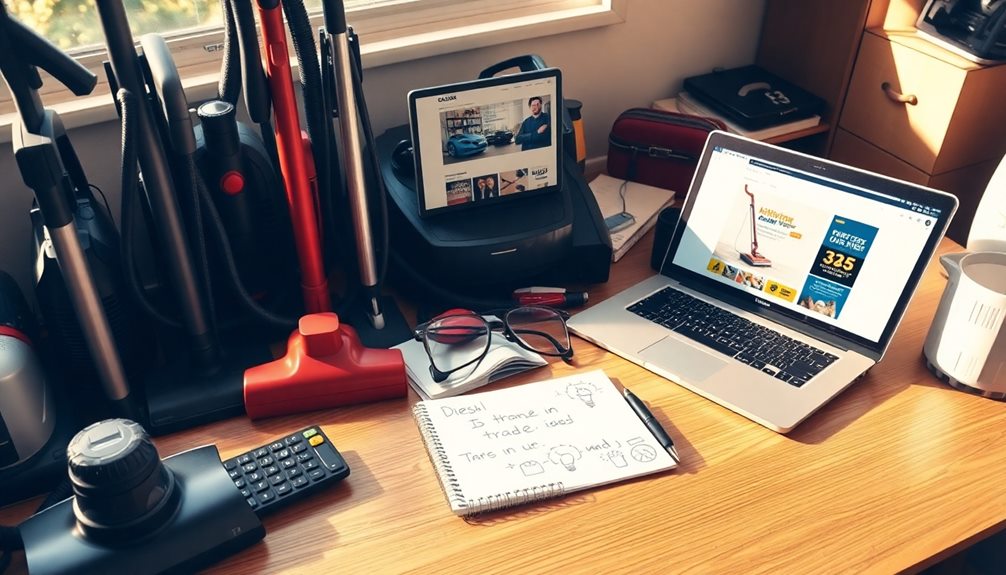
If donating isn't the right option for you, selling or trading in your vacuum cleaner can be a practical solution. You can list functional vacuums on platforms like Craigslist or eBay, potentially earning some extra cash while preventing the appliance from ending up in a landfill.
Many companies offer trade-in programs that allow you to exchange your old vacuum for discounts on new purchases, ensuring responsible disposal of your old unit.
Online marketplaces like Facebook Marketplace and Freecycle are also great for quick sales or donations, connecting you with local buyers or interested parties. This not only helps you declutter but also supports your community by making a working vacuum accessible to someone in need.
Additionally, some manufacturers have take-back programs where you can send in your old vacuum for recycling or refurbishment, promoting sustainable practices.
Legal and Safety Considerations
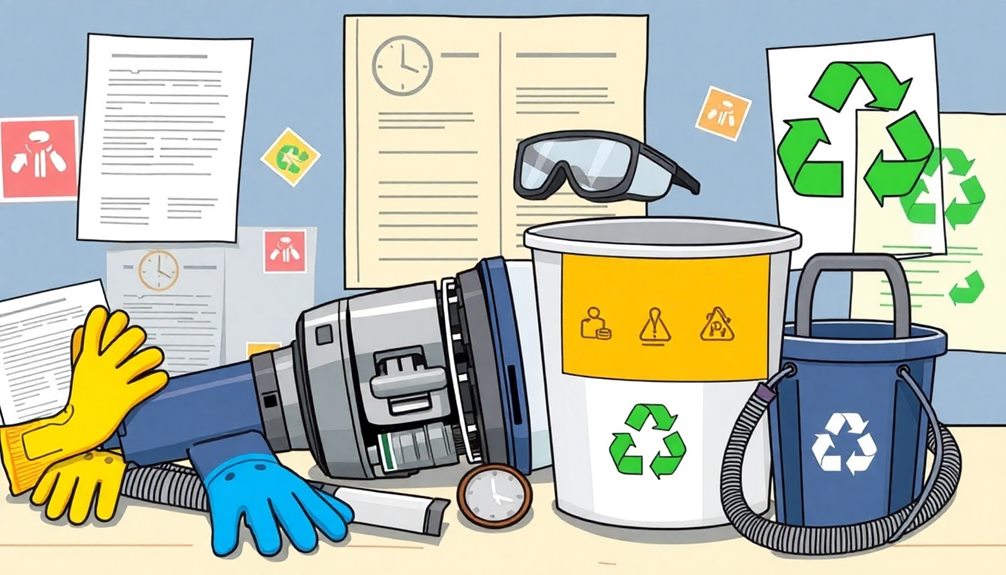
When it comes to recycling your vacuum cleaner, understanding the legal and safety considerations is vital for responsible disposal. Many areas have laws regarding the proper handling of e-waste, including vacuum cleaners. It's important to check with local authorities for guidelines, especially concerning hazardous materials like batteries and electronic components.
Here are some key points to keep in mind:
- Know the Legal Requirements: Familiarize yourself with local regulations regarding e-waste disposal to avoid fines or penalties.
- Handle Hazardous Materials Carefully: Batteries, particularly lithium-ion types, can be dangerous. They may require special disposal procedures to prevent fires or toxic leaks.
- Use Designated Facilities: Always store batteries in a cool, dry place and utilize recycling facilities or collection events designed for hazardous waste.
- Consult Professionals: If you're disposing of large quantities of vacuums or their components, consult with local recycling centers to guarantee compliance with safety regulations.
Best Practices for Responsible Disposal

Recycling your vacuum cleaner responsibly starts with understanding the best practices that guarantee an eco-friendly disposal process.
First, research local recycling centers that specialize in e-waste. These centers can ascertain your vacuum cleaner is disposed of in a way that maximizes recyclability.
Before heading to the recycling center, disassemble your vacuum cleaner by removing bags, filters, and hoses. This step simplifies the recycling process, allowing for proper material segregation.
It's also essential to clean your vacuum of dust and debris. Contaminated materials can hinder the recycling process and affect the quality of recycled products.
If your vacuum is still functional, consider donating it to local charities, shelters, or thrift stores. Donating functional vacuums not only extends the product's lifecycle but also supports community needs.
Additionally, participate in local e-waste collection events or take advantage of retailer take-back programs. These initiatives often provide convenient and safe disposal options for your old vacuum cleaner.
Frequently Asked Questions
What Should I Do With an Old Vacuum?
You've got options for your old vacuum. Consider donating it, selling it online, or participating in a trade-in program. If disposal's your choice, seek out eco-friendly junk removal services to handle it responsibly.
Can I Throw Away a Vacuum Cleaner in NYC?
Imagine finding an old vacuum cleaner in your closet. You can't just toss it in the trash in NYC; it's electronic waste. Instead, drop it off at a designated e-waste site or attend a collection event.
Does Best Buy Recycle Robot Vacuums?
Yes, Best Buy recycles robot vacuums. You can drop them off at their stores during e-waste events or use their mail-back service. It's a simple way to guarantee responsible disposal and sustainability.
What Can I Do With My Old Hoover?
Got an old Hoover collecting dust? You've got options! Consider donating it, selling it online, or using a manufacturer's take-back program. Each choice gives your vacuum a chance at a new purpose. What'll you choose?
Conclusion
Recycling your vacuum cleaner isn't just about getting rid of old appliances; it's like giving your machine a second life. Imagine this: every vacuum you recycle is like planting a tree, helping the planet breathe easier. By properly disposing of these devices, you're reducing e-waste and making a positive impact on the environment. So, when it's time to say goodbye to your vacuum, remember—your choices can nurture a greener future for everyone.
